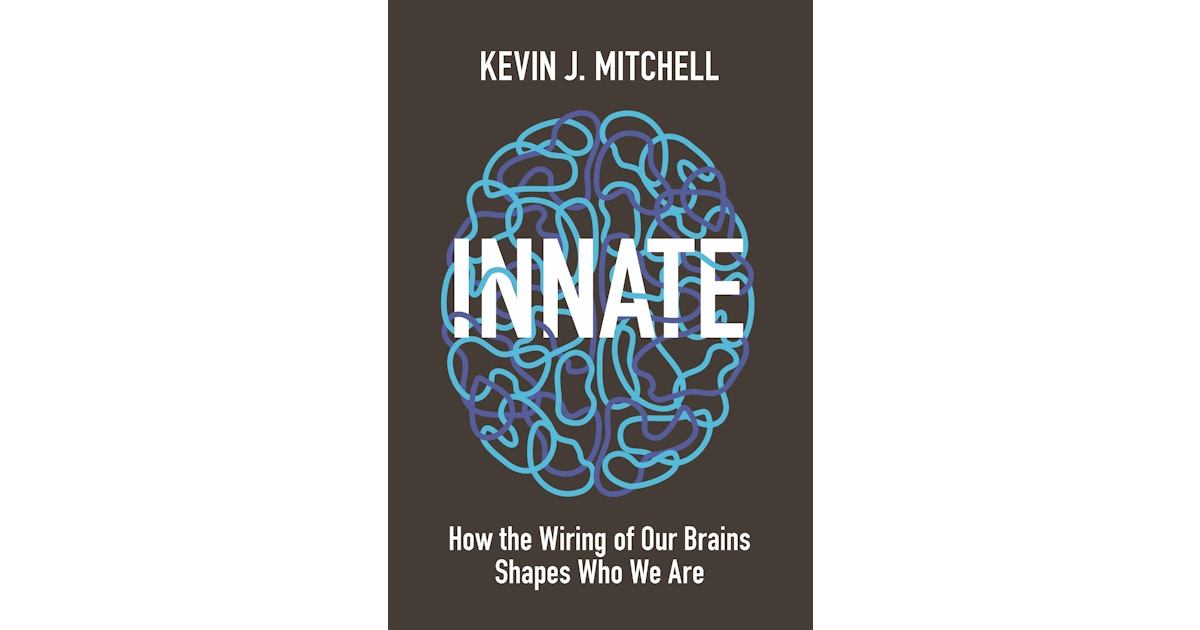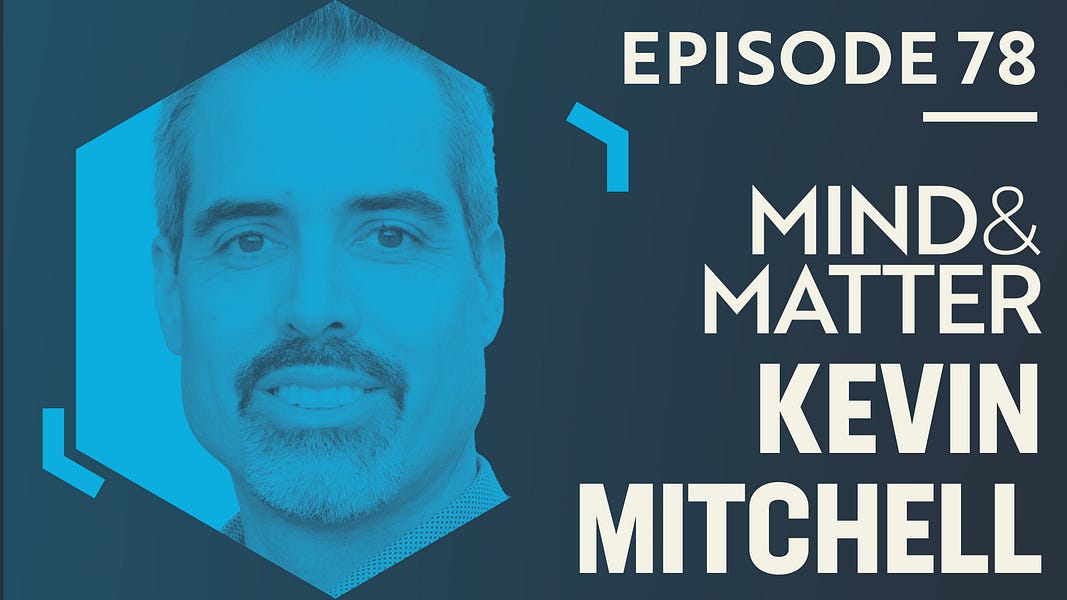Further Reading
Some really great books here if you're keen to learn more.
History of Mendel and Weldon and their impact on biology


And I would highly recommend this review by Lynn Chiu for a very brief history on how we got to the 20th century picture of inheritance/evolution (aka The Modern Synthesis).
Pedagogy and genetics in the public domain



Waddington's landscape and systems biology

Nature vs Nurture



Sources
Between 1990 and 2003, the Human Genome Project sequenced our entire genetic code, or, as they call it, the human blueprint.

During the mid 90s, the hopes for the project were high.
Science journalist Laurie Garrett imagined that by 2020, everyone would be carrying around their own little genome cards. So, if you ever ended up in hospital, doctors would be able to swipe your card to see which mutation was causing the problem, and you'd then be sent off for gene therapy to be cured. Easy peasy.

That was the promise of the Human Genome Project, but 2020 was now three years ago and no-one has a genome card yet.


The harsh reality for the project was that the link between our DNA and who we are is way more complicated than we imagined.
For the vast majority of the characteristics that make you, you, there just isn't a direct connection between gene and trait.

That seems to go against what we get taught at school and what we see in the media, where it seems as though there's genes for blue eyes, genes for red hair, genes for Scottish-ness, genes for sexuality, even genes for dog ownership. It's all encoded in the programming language of life.
So what's wrong with this picture?
The father of genetics was Gregor Mendel – an Augustinian friar who also had a keen interest in science. Although he initially wanted to become a teacher, his (highly relatable) fear of oral presentations caused him to fail the certification exam … Twice.

With a teaching career seemingly out of grasp, he decided to go about conducting his own research in the monastery garden in Brno.
Between 1856 and 1863, Mendel used over 28,000 pea plants to study plant hybridisation and his results are familiar to anyone who's studied high-school genetics today.

He found that the hybridisation of different coloured peas, as well as other traits, followed regular patterns. For instance, if a yellow pea plant was crossed to a green pea plant, all the offspring would be yellow.
You might remember this from school as yellow being a dominant trait and green being a recessive one. The offspring of these hybrid yellow plants when crossed to each other would then have a 3:1 ratio of yellow peas to green ones.
This is the origin of the infamous concept of skipping a generation. Green was present in the first generation, disappeared in the second only to reappear in the third.
Another common example of this kind of inheritance is eye colour. Much like Mendel's peas, brown eyes are dominant to blue eyes and using special tables known as Punnett squares, we can quickly find out that it's possible for two brown-eyed parents to have a blue-eyed child (because they happen to carry hidden or recessive blue eyed genes) But it's impossible for two blue-eyed parents to have a brown-eyed child.

Altogether, Mendel's picture of inheritance (as it was interpreted by his followers) gave the following picture of genetics:

- Genes are tightly linked to traits and act like blueprints. If you find a specific gene in your genetic blueprint, you know exactly what trait will occur.
- Inheritance can be easily tracked using Mendel's laws of inheritance, giving us phenomena like the famous 3:1 ratio.
- The impact of the environment is minimal - traits can be determined using Punnett squares in any environmental context.
But, none of these three things are actually true. Not even for a seemingly simple trait like eye colour.
For one, eyes can come in all shades of blue, brown, grey, multicoloured, two different colours and can even change throughout your lifetime with some babies being born with blue eyes and going on to develop brown eyes. Discrete categories like blue and brown are actually decided pretty arbitrarily by ignoring all of this other variation.


In reality, eye colour is actually the result of many genes interacting with one another. Not a single gene, with two forms, that can be modelled with a Punnett square.

And again, this is nothing new. Thomas Hunt Morgan said the following in 1915 on eye colour in the geneticist's favourite organism, the fruit fly:
Mendelian heredity has taught us that the germ cells must contain many factors that affect the same character. Red eye color in Drosophila, for example, must be due to a large number of factors, for as many as 25 mutations for eye color at different loci [positions on chromosomes] have already come to light ... Each such color may be the product of 25 factors (probably of many more) and each set of 25 or more differs from the normal in a different factor. It is this one different factor that we regard as the “unit factor” for this particular effect, but obviously it is only one of the 25 unit factors that are producing this effect ... The converse relation is also true, namely, that a single factor may affect more than one character ... Failure to realize the importance of these two points, namely, that a single factor may have several effects, and that a single character may depend on many factors, has led to much confusion.
Morgan, T. H., Sturtevant, A. H., Muller, H. J., & Bridges, C. B. (1915). New York The mechanism of Mendelian heredity. Henry Holt and Company. Quoted in: Kampourakis, K. (2021). The Origin and Evolution of the Gene Concept. In Understanding Genes (Understanding Life, pp. 31-64). Cambridge: Cambridge University Press. Emphasis mine. https://doi.org/10.1017/9781108884150.004
As a result, it's entirely possible for blue-eyed parents to have brown eyed children. This fact is not really surprising to geneticists and has been well known for over 100 years, but it doesn't fail to freaks parents out.

But if Mendel's story doesn't even work for eye colour, what is the right way to think about how genes work in humans and other organisms?
In 1957, Conrad Hal Waddington published The Strategy of the Genes whose key argument can be summarised in these two figures.


Waddington suggests that we should think of our genes, not in terms of blueprints or Punnett squares. But as a complex system of pegs and guyropes that hold up a surface like a circus tent. The traits that we develop like blue or brown eyes, are then the result of a marble rolling down this complicated surface into one of the valleys.

As Waddington himself admits, following this three dimensional metaphor is tricky. So to make things clearer, I've simplified his argument down to something more familiar.

Here I've built a Steve Mould-style, 2D version of the Waddington landscape and it ends up looking like the classic marble drop carnival game, where you place a marble at the top and try and aim it into the highest score at the bottom.

In this modified version of Waddington's metaphor, genes are the paddles in the middle and the bins at the bottom are different traits like different possible eye colours. The ball falling then represents the process of development from single celled embryo to adult.
As for the environment, Waddington was a little inconsistent in conceptualising its role. But at least in one instance, another figure in The Strategy of The Genes, he uses an arrow to show an environmental stimulus bumping the marble in a particular direction.


That will do for us, and we can simulate it with a push from this hairdryer.
Waddington's landscape gives us quite a few useful insights that are missed by the Mendelian model.
First and foremost, we can clearly see that every trait has to be the product of many genes working together to funnel the marble down a particular path.
You can imagine how complex this marble run would have to determine things like cardiovascular disease for instance, as illustrated beautifully by this figure from the Genetics Pedagogies Project (more on them later).

Or take the Y chromosome that's often considered to 'determine' the male sex. XY chromosomes in your genetic blueprint give a male person and XX chromosomes give a female.

But from cases like South African runner Caster Semenya (a woman with XY chromosomes) we already know this picture is too simple. And we can use Waddington's landscape to see why.
The Y chromosome, or specifically the SRY gene on the Y chromosome, has to function in concert with many other genes and other factors like hormones to collectively determine sex.

But if these other genes were altered in some way, or if different amounts of hormones are present throughout development, the landscape could shift in complex ways to get different sexual patterning.
Even without changing the landscape, randomness can also arise naturally, by the marble happening to fall in a different bin every time I drop it. That is, the same exact genes can give very different results.

This is partly what happens when identical twins - who have the same genetics - end up with different handedness, different eye colours, different neurological conditions like schizophrenia, even different sexes. It's a result of gene expression being a noisy process. Of course, differing environments also play a role in generating variation between identical twins too.




But either way, we can now see why it's misleading to call the Y chromosome or specifically SRY, the gene "for" maleness. It can certainly make a big difference in how sexual characteristics are determined, but it can't act alone and it doesn't guarantee anything.
Really we shouldn't talk about genes "for" anything because the structure of all traits look similar to sex. They're the product of complex networks of genes acting together with the environment.

Even traits that are supposedly under the control of a single gene like cystic fibrosis, PKU and Huntington's disease, can be modified in their severity by several other genes and environmental factors. Again highlighting the convoluted relationship between gene and trait.



It is a little annoying that Mendelian genetics follows such nice rules and it would seem as though Waddington's landscape lacks the mathematical niceties of genotype ratios and Punnett squares.
But in the past few years this has begun to change with the landscape moving from being a mere metaphor to inspiring mathematically rigorous models that describe real developmental patterns. This has also been helped along by the development of new technologies, particular those that allow us to study the gene expression of individual cells.

For instance, James DiFrisco and Yogi Jaeger have shown that the exact same genes in the exact same network of interactions can result in significantly different morphological patterns in flies.


The reason behind this is a little hard to show on my 2D marble run, but in Waddington's original diagram, this is because the genes - the pegs - can pull with different tensions on the guy-ropes to affect the landscape, where the tensions are the 'strengths, timings, and rates of interaction in the gap gene network.'


The result of all this pulling of guyropes are qualitative changes in the genetic landscape. For instance, it's possible for a bistable regime (where the marble can only roll down into two valleys) to turn into a multistable one (where more valleys open up for the marble to roll into). This opens up the possibility for new traits to emerge in the population.


Visually, we can imagine how loosening the slack in this imaginary guy rope could turn the landscape on the left into the one on the right.
All of this does leave one big historical question unturned. How did Mendel manage to get such nice inheritance patterns despite all of this complexity?
Well truth is, the pea plants Mendel was working with were pretty special. When other biologists tried to replicate Mendel's results, like Raphael Weldon tried to do in 1902, their peas looked nothing at all like Mendel's. Weldon found that pea colour actually existed on a spectrum from yellow to green.


It definitely didn't seem like a binary trait like we see in today's textbooks or Mendel's original paper.


Weldon wrote in a letter to statistician Karl Pearson that Mendel must either be a truly astonishing man, or a black liar.

But this is being a little harsh on Mendel because remember, he was only directly interested in plant hybridisation, not heredity itself.



And to study hybrids, he first had to purify his pea plants to remove any intermediate variation. This wasn't easy and took him 2 years of artificial breeding to get purebred lines that maintained their colour across generations.


Unknowingly, Mendel was essentially fudging the Waddington landscape of the pea colour genes to the very boring case of a marble going into the same bin everytime.
And once he had done that, the patterns we retrospectively call "Mendel's Laws of Inheritance" do indeed emerge. But only in this very particular context.
To quote Annie Jamieson and Greg Radick:
These patterns do arise; but they arise only under special conditions, notably when humans [like Mendel] have engineered artificially purified lineages into being, by deliberately excluding unwanted variability.

It is therefore a big mistake, you could even call it a misinterpretation of Mendel's experiments, to extend these patterns to the entire biological world in the wild.


I can hear some of you saying: Jake, this is the second video you've done critiquing models in biology that have been hugely successful. Yes ok, they have their flaws, but aren't we supposed to teach students the oversimplified model first?
And to that, I'll respond with a resounding no.
This line of thinking is based on the idea that students are these silly naïve souls that are only ready for the truth once they're grown up.
Truth is, students are extremely receptive to being taught a more accurate and modern genetics curriculum. The Genetics Pedagogies Project did just that. They created an introductory genetics course that placed the entangled nature of genes, environments and organisms, front and centre and contextualised Mendelian traits as a rare, special case.



And, compared to students who took the standard course, the 28 students taught the new curriculum: 'emerged as less believing of genetic determinism, and … better prepared to understand the subtleties of modern genetics'.


Surely the point of a good scientific education should be just that. To teach students how to do modern science, not dwell in outdated paradigms.
Anyone that can understand how a marble run works is capable of understand how our genetics actually work. There's no need to lie.
Plus even if we eventually teach students the modern picture of genetics in later courses, there's a very good chance that students never get exposed to these subtleties because they never take the more advanced courses.
I'm sure the vast majority of you only got exposed to the Mendel's peas style of genetics at school and that was it.
With the Mendelian blueprint picture firmly ingrained in the minds of most students, the public at large is much more prone to believe questionable headlines like: 'Genes determine how young use internet and social media' and 'Scientists find 24 ‘golden’ genes that help you get rich'.
If instead we placed better metaphors like Waddington's landscape in the curriculum from the beginning, these headlines would be quickly dismissed as nonsense. Hopefully most of you realise there's something dodgy going on with the claim that something as complex as your income could be determined by your genetics.


Not to mention how deterministic thinking like this can easily move across into talk of "good genes" and "bad genes" and then blaming the poor for being poor because of some innate genetic characteristics. And we've mindlessly just slid into eugenics territory.


It's actually Mendel's 200th birthday this year, and it might seem like a pretty rotten birthday present to suggest jettisoning his ideas from the genetics curriculum. But as Greg Radick points out:
If we want to honour Mendel, then let us read him seriously, which is to say historically, without back-projecting the doctrinaire Mendelism that came later. Study Mendel, but let him be part of his time.

Credits


















Member discussion: